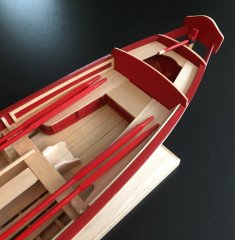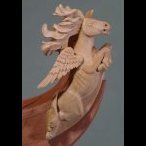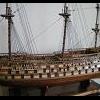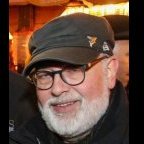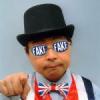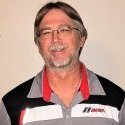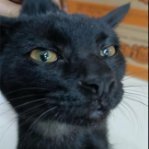-
Posts
9,389 -
Joined
-
Last visited
Reputation Activity
-
 Chuck got a reaction from PaddyO in US Brig Syren by _SalD_ – FINISHED - 3/16" scale
Chuck got a reaction from PaddyO in US Brig Syren by _SalD_ – FINISHED - 3/16" scale
Fine run to that plank...dont forget to measure up from the top of that plank at the bow to make sure that you have enough room for all of the strakes along the stem. I see many builds that curve the initial plank to high up on the stem and it causes issues later.
-
 Chuck got a reaction from FrankWouts in HMS Winchelsea - FINISHED - 1764 - by Chuck (1/4" scale)
Chuck got a reaction from FrankWouts in HMS Winchelsea - FINISHED - 1764 - by Chuck (1/4" scale)
With the benches all done, its finally time to permanently glue those stern windows in position. This includes the acetate for the simulated glass. Just a tiny drop of glue was used to glue the wooden window frames in permanently. Then the acetate...
For these as you might know, you cant use CA glue. It will fog up the acetate awful and look pretty bad. You want to use as little glue as possible or even no glue at all. We will be positioning window sills inboard to finish off the look. They will also hold your acetate in position.
With the acetate in position I proceeded to cut lengths of 1/4" x 1/32" strips to fit between each window as a sill. This is tricky slow work but well worth the effort. It gives the whole stern bench area a clean look. You will cut these to shape just like we did for the transom cap. Just notch them out and leave a slight over hang. You can see my final piece yet to be positioned below.
To complete this area sand the forward edge after all of these pieces are glued in place to even out the overhang. Then apply some wipe on poly. I am quite happy with the results even though most of this detail will be hard to see at all once the quarter deck is framed and planked.
I also thought I would mention that the way I like to work is from the stern forward with all the deck details etc. Next I will start adding the ringbolts, cleats and other features to the bulwarks and get the cannon in position.
But first there is something else that can be done and you guys dont even have to wait until chapter 5 comes out. You should be able to gather up all the materials you need. I am referring to the gun port lids. You will need five per side. There are many ways to make these of course. In this case I will be using brass strips blackened. But its easy metalwork. No soldering!!! I made one port lid today just to go through the process. I will detail how I am going to make these so you guys who are waiting, can do these ahead of receiving Chapter 5. They are working port lids. I will show the aft lid closed on my finished model but you guys can do otherwise. I will keep them all closed while I am working on other stuff to protect them.
So the port lids are next to be made before I start the bulwark details.
-
 Chuck reacted to scrubbyj427 in HMS Portland 1770 by scrubbyj427 - 1:48 - 4th rate 50-gun ship
Chuck reacted to scrubbyj427 in HMS Portland 1770 by scrubbyj427 - 1:48 - 4th rate 50-gun ship
Finally back to work on the model, I finished the last remaining Hawes pieces and now I’m moving onto finishing up the gunports and fairing caps. Chapter one is almost finished and then I can move on to fairing the hull.
-
 Chuck got a reaction from FrankWouts in HMS Winchelsea 1764 by Frank Wouts 1/48
Chuck got a reaction from FrankWouts in HMS Winchelsea 1764 by Frank Wouts 1/48
Nicely done. Good to see it progressing.
-
 Chuck reacted to FrankWouts in HMS Winchelsea 1764 by Frank Wouts 1/48
Chuck reacted to FrankWouts in HMS Winchelsea 1764 by Frank Wouts 1/48
Checking the flow of the bow of the middle section of the jigsaw part of the deck planking. Just gave it a little fine sanding thusfar. Next step is to measure the equal distances with the template at each section line and lining off with the rest of the planking at both sides with narrow tape.
Frank.
-
 Chuck reacted to John Murray in HMS Winchelsea 1764 by John Murray - 1:48
Chuck reacted to John Murray in HMS Winchelsea 1764 by John Murray - 1:48
I have assembled my 3rd version of the stem after having issues with the laser using too much power.. I used some Sassafras that I had and thicknessed 3 300mm x 80mm x 6.35mm planks with my Proxxon DH40 thicknesser.
I used one plank to calibrate the lasers power to the material and then cut the pieces out on the 2 remaining planks. I had taken the original files and used acrobat and illustrator to make new cut files that would fit the plank sizes I had.
I may use this as the final version of the stem.
-
 Chuck got a reaction from Edwardkenway in Syren Ship Model Company News, Updates and Info.....(part 2)
Chuck got a reaction from Edwardkenway in Syren Ship Model Company News, Updates and Info.....(part 2)
Another new item will soon be in stock. I had run out of my old swivel guns. Those were cast in the traditional way and not 3D printed. They has casting marks etc. So now that I ran out of them I figured I would do a redesign. Here are photos of the new 3D printed swivel guns. Two pieces. The yoke is flexible-ish. This enables some manipulation to just slide the yoke into position from the bottom of the barrel and into the the holes. Once you get one done the others will be easy.
I am pretty thrilled with these results because as some of you may be aware, black 3d printing resin is somewhat less than desirable. The results often look too much like plastic or are too shiny and doesnt really show details well. So I have conducted many tests yet again on my resin of choice. The black finish is not to stark a black or but nice and warm and on the touch of a dark warm gray. Very dark. The material is also matte or barely satin. So its a win-win. I tried very hard to make these look like blackened brass or brushed metal which I think I achieved pretty darn close actually. This batch is 13/16" long not including the handle. (What is used for the Winnie).
Use these straight out of the bag.
I should have some more sizes and these will be fully stocked in a few days.
-
 Chuck got a reaction from hollowneck in Crew figures with Heroforge
Chuck got a reaction from hollowneck in Crew figures with Heroforge
That looks very good. Well
done.
-
 Chuck reacted to Trussben in HMS Portland 1770 by Trussben - Portland Scale Ship Co. - 1:48 - 50 gun 4th rate
Chuck reacted to Trussben in HMS Portland 1770 by Trussben - Portland Scale Ship Co. - 1:48 - 50 gun 4th rate
Here are the first few Starboard side frames installed, we will begin to get a proper feel for what the model is going to look like now.
The designer has left lots of “meat on the bones” for later fairing of the hull when framing is complete.
-
 Chuck got a reaction from Tigersteve in Syren Ship Model Company News, Updates and Info.....(part 2)
Chuck got a reaction from Tigersteve in Syren Ship Model Company News, Updates and Info.....(part 2)
Another new item will soon be in stock. I had run out of my old swivel guns. Those were cast in the traditional way and not 3D printed. They has casting marks etc. So now that I ran out of them I figured I would do a redesign. Here are photos of the new 3D printed swivel guns. Two pieces. The yoke is flexible-ish. This enables some manipulation to just slide the yoke into position from the bottom of the barrel and into the the holes. Once you get one done the others will be easy.
I am pretty thrilled with these results because as some of you may be aware, black 3d printing resin is somewhat less than desirable. The results often look too much like plastic or are too shiny and doesnt really show details well. So I have conducted many tests yet again on my resin of choice. The black finish is not to stark a black or but nice and warm and on the touch of a dark warm gray. Very dark. The material is also matte or barely satin. So its a win-win. I tried very hard to make these look like blackened brass or brushed metal which I think I achieved pretty darn close actually. This batch is 13/16" long not including the handle. (What is used for the Winnie).
Use these straight out of the bag.
I should have some more sizes and these will be fully stocked in a few days.
-
 Chuck got a reaction from Rustyj in Sloop Speedwell 1752 by Chuck - Ketch Rigged Sloop - POF - prototype build
Chuck got a reaction from Rustyj in Sloop Speedwell 1752 by Chuck - Ketch Rigged Sloop - POF - prototype build
When chapter 5 comes out. All of you guys building the model will get a complimentary figure to show scale. I will randomly select one of these and include it in your order for that chapter.
-

-
 Chuck got a reaction from Trussben in Sloop Speedwell 1752 by Chuck - Ketch Rigged Sloop - POF - prototype build
Chuck got a reaction from Trussben in Sloop Speedwell 1752 by Chuck - Ketch Rigged Sloop - POF - prototype build
When chapter 5 comes out. All of you guys building the model will get a complimentary figure to show scale. I will randomly select one of these and include it in your order for that chapter.
-

-
 Chuck reacted to woodartist in HMS Winchelsea 1764 by woodartist - 1:48
Chuck reacted to woodartist in HMS Winchelsea 1764 by woodartist - 1:48
Progress is continuing, just finished Chapter 7.
-
 Chuck got a reaction from No Idea in Big changes at Syren Ship Model Company...
Chuck got a reaction from No Idea in Big changes at Syren Ship Model Company...
As I get close to retirement I am shifting my business plan a bit. I am not retiring yet, but I am starting to create the end game plan. My business is currently really two sep. divisions or production flows. Production of kits and then Production of after market parts, blocks and rope and fittings etc. Both take a huge amount of time and effort. I have mentioned before that I am currently working 7 days a week and 12 hours a day easily. Now that I have moved and enjoy the leisure living in the back country of NJ, my wife has started to use the word "leisure" as a verb. Chuck we need to "leisure" more. You work to much. I want to travel more. You are going to have a heart attack...yada yada yada. Sooo, the Speedwell will be my last physically produced kit. In addition, I have stopped production of all of my kits...Kind-of. I AM NOT GOING OUT OF BUSINESS. Let me make that perfectly clear. In fact my business and sales is now greater than at the height of the pandemic. Lots of rope and blocks being sold. LOL I have many many years left in me. BUT moving forward, I will now be focusing on just fittings and related ship model items...No kit model production. I am retiring all of my kits. This includes Speedwell. I sold the last of 50 Speedwell chapter 1 and 2 sets recently. I will only be selling the remaining chapters to those who bought those 50 chapter one and two sets. So that will be easy enough for me to handle and administer. Its just getting tougher and tougher to source enough wood to make this stuff in the USA and remain profitable. I also dont want keep buying and storing a mountain of wood in my garage. Literally a mountain of it as you can imagine. In addition I just dont have the time or desire to do this in 60's. The good news is that I will be introducing a ton of new fittings. Stuff for French ships too!! I am slowly revamping my website...and you might experience disruptions as I make it easier to find all of the fittings I offer. I have hundreds and hundres already and many more on the drawing board. This is mindless repetitive work and will help pay the bills into retirement and beyond. So no plans to stop making that stuff anytime soon. In fact my wife wont let me fully retire until Im 67 so there is that. God bless her. Now the fun part...just because I am not producing these current kits any longer doesnt mean that someone else wont be MFGing them. All of my kits already available will not just go away...you do know him and love him. I have reached an agreement with Chris at Vanguard who will be taking over the reigns and manufacturing my kits. This will take some time as Chris is finishing up his Surprise model kit. The Winnie group is fine...just not selling any more starter bulkhead sets or chapter one sets. I will continue making later chapter sets available for the group in perpetuity. Its not a big deal until Chris can take over. The longboat group build will also remain because that will probably be the first kit being produced by Chris followed by the barge. So stay tuned and please dont bother Chris about getting any of this stuff. It will be made available as soon as he can get to it. He is busy like me...so keep that in mind. All Winnie parts, and Speedwell Chapter sets and Cheerful parts will continue being sold on MY site for folks currently building them until the hand-off is eventually made. So fear not!!! NOW...this frees me up to build and design Newer projects. These however will be made with the idea that the models will be built using plansets and thus not dependent on kit production. Those will be released here as open source plans or at Seawatch as a new book. Or if Chris wants, he can take them and run with them too. That is my retirement plan. Keep making parts for sale for all of your projects while still building models that interest me and passing those designs on. Now back to making rope!!! Blocks!!! and other stuff.... Lantern mini kits both English and French are next on deck. Then ship's wheels and a whole host of other good stuff for you folks!!! Chuck -
 Chuck got a reaction from cotrecerf in Sloop Speedwell 1752 by Chuck - Ketch Rigged Sloop - POF - prototype build
Chuck got a reaction from cotrecerf in Sloop Speedwell 1752 by Chuck - Ketch Rigged Sloop - POF - prototype build
When chapter 5 comes out. All of you guys building the model will get a complimentary figure to show scale. I will randomly select one of these and include it in your order for that chapter.
-
 Chuck got a reaction from BANYAN in Sloop Speedwell 1752 by Chuck - Ketch Rigged Sloop - POF - prototype build
Chuck got a reaction from BANYAN in Sloop Speedwell 1752 by Chuck - Ketch Rigged Sloop - POF - prototype build
When chapter 5 comes out. All of you guys building the model will get a complimentary figure to show scale. I will randomly select one of these and include it in your order for that chapter.
-
 Chuck got a reaction from yvesvidal in Sloop Speedwell 1752 by Chuck - Ketch Rigged Sloop - POF - prototype build
Chuck got a reaction from yvesvidal in Sloop Speedwell 1752 by Chuck - Ketch Rigged Sloop - POF - prototype build
When chapter 5 comes out. All of you guys building the model will get a complimentary figure to show scale. I will randomly select one of these and include it in your order for that chapter.
-
 Chuck got a reaction from fake johnbull in Sloop Speedwell 1752 by Chuck - Ketch Rigged Sloop - POF - prototype build
Chuck got a reaction from fake johnbull in Sloop Speedwell 1752 by Chuck - Ketch Rigged Sloop - POF - prototype build
When chapter 5 comes out. All of you guys building the model will get a complimentary figure to show scale. I will randomly select one of these and include it in your order for that chapter.
-
 Chuck got a reaction from CaptMorgan in Sloop Speedwell 1752 by Chuck - Ketch Rigged Sloop - POF - prototype build
Chuck got a reaction from CaptMorgan in Sloop Speedwell 1752 by Chuck - Ketch Rigged Sloop - POF - prototype build
Although time has been limited for me for working on the model, I have been making progress. I have finalized the way I will do the deadeye strops and chainplates. These are all laser cut and makes life a lot easier. Once designed the actual construction time was non-existent. It took seconds to add the strops.
This was just a test run but an improved version of those I developed for the Winnie. They really do just slip right on.
There will be two sizes of deadeyes and strops. The chainplates will all be the same more or less. They are laser cut and 1/16" wide and about the thickness of was brass straps would have been. You must do a little bit of work on the straps but not much. The hole for the little brass pin must be drilled through the bottom of the strap. I used a "67 drill bit. Its acrylic so this was so much easier than drilling through brass. At the top of the strap there is a little "hook" shaped on the end. This will fit into the bottom of the strop after the deadeye is placed on the channel. The width is 1/16" as I mentioned which is a tad wide for the hook to fit in the strop bottom. So this was filed narrower on both sides. This was done just at the "hooked" part of the strap which fits into the strop which you can see above. They are cut from black acrylic so no need to blacken but you may want to weather them a bit to "metalize" them in appearance.
This is what they will ultimately look like on this sectional model which was really fun to make of the Speedwell. The deadeyes are my new resin 3D printed ones. These are the color of Swiss Pear. I will be using these on my model. You can see how nicely the straps and strops worked out. Also have a look at those molding strips on this sectional model. The fancy molding. This was a new test and also laser cut. I will be using them on the sectional model projects.
The inboard side. The entire sectional test is completed. I just have to add and rig one cannon. That was the whole purpose of this mini-model. It is to be used to help teach building techniques for cannon carriages and the their rigging. My local club members in NJ will be using it as a quick and hopefully fun group build as a tech session taught by me. It should be fun. There will also be some gun crew figures added.
This is a close up of the molding test. I know how some guys hate creating scrapers to make their own molding. This will save the guys a lot of time. I am thinking about offering these as stand along optional moldings for the big project as well. Or for any model really. There are three profiles. 1/16", 3/32" and 1/8" wide. All three are 1/32" thick. They are laser cut on Syrenite. They can be used as is but I do recommend sanding the top and bottom edges to soften them and round them off. Although the color as is looks great. I like to enhance it by wiping some Gel Stain on them and then wiping it off. It settles into the grooves and help highlight the profile. It deepened the color a bit as well. You know...just like I handle making the carved resin figurehead and stern figures look like boxwood. It takes about 2 minutes to do. Then wipe off the excess. The more coats the deeper the color depending on your preference. I think folks might like the option to buy these molding strips regardless of the project. So expect soon. But let me know if you are interested as I wont waste material and time if there is little interest. Volutes and scrolls should be easy to add to this line of products as well although every model uses a different size scroll-work. So maybe I have to thing about that. It can also be painted and as I said sanded easily.
-
 Chuck got a reaction from Pitan in Syren Ship Model Company News, Updates and Info.....(part 2)
Chuck got a reaction from Pitan in Syren Ship Model Company News, Updates and Info.....(part 2)
Another new item will soon be in stock. I had run out of my old swivel guns. Those were cast in the traditional way and not 3D printed. They has casting marks etc. So now that I ran out of them I figured I would do a redesign. Here are photos of the new 3D printed swivel guns. Two pieces. The yoke is flexible-ish. This enables some manipulation to just slide the yoke into position from the bottom of the barrel and into the the holes. Once you get one done the others will be easy.
I am pretty thrilled with these results because as some of you may be aware, black 3d printing resin is somewhat less than desirable. The results often look too much like plastic or are too shiny and doesnt really show details well. So I have conducted many tests yet again on my resin of choice. The black finish is not to stark a black or but nice and warm and on the touch of a dark warm gray. Very dark. The material is also matte or barely satin. So its a win-win. I tried very hard to make these look like blackened brass or brushed metal which I think I achieved pretty darn close actually. This batch is 13/16" long not including the handle. (What is used for the Winnie).
Use these straight out of the bag.
I should have some more sizes and these will be fully stocked in a few days.
-
 Chuck reacted to hollowneck in Syren Ship Model Company News, Updates and Info.....(part 2)
Chuck reacted to hollowneck in Syren Ship Model Company News, Updates and Info.....(part 2)
Two bags worth just ordered (and some other 3D gubbins)...
-
 Chuck got a reaction from Jack H in Syren Ship Model Company News, Updates and Info.....(part 2)
Chuck got a reaction from Jack H in Syren Ship Model Company News, Updates and Info.....(part 2)
The Lanterns are in production over the next few days.
I thought it would take a while to write the instructions but this was the quickest lantern I ever built.
Its a three part lantern.
You get the bottom/window part 1
The top "Lid" part 2
and the Glass window insert part 3.
The photo below shows one finished lantern with frosted glass insert. You can also see a second lantern under construction. This has a clear glass insert. Note the two inserts. One is frosted which is how they all appear when 3d printed. Any of you who have ever tried to 3D print clear resin knows that at best you get this frosted appearance after washing and curing.
1.But if you prefer a clearer glass insert that is easy enough. Behind the lanterns you can see some water-based Polycrylic. You should use gloss or high gloss but all I had was ultra flat and it still worked very well. Just use a very clean brush to coat the glass insert inside and out. I used a helping hands to secure the glass insert and just brush the stuff un. A THIN COAT is all you need. Dont touch it...dont paint a second coat etc. Let it dry fully before touching it. It works like magic and instantly make your piece clear. Now if I used gloss it would have been like clear glass. But honestly, the frosted original looks very good as is also. You can see an original frosted and a varnished insert in the photo.
2. Insert the glass into the lantern body. It can only fit one way...no glue needed. Just do a press fit. Make sure it is seated all the way in there. It is printed to be a snug fit. After you insert the glass part you can flip the lantern upside down and apply gentle pressure if you want to really seat it in there. If the glass still protrudes higher than the lantern ....which it might...just use a sanding stick that is flat to sand it down level and flush with the lantern top. In fact you will absolutely have to do this anyway to get a flat surface in the next step.
3. Take a flat sanding stick or emory board and sand the top of the lantern flat to accept the top..."lid" or roof. There will be some little sprue marks and unevenness because of the 3D printing supports. Sand it all down flat. The hardest part is getting all the dust out and keeping the interior clean. Use one of those "air in a can" sprayers. Then repeat and sand the bottom of the lid flat for the reason. You want a nice tight fit between the two when you glue them together.
4. Glue the roof lid onto the lantern. Dont use a lot of glue. You dont want it squishing out or making the glass dirty. Yes I did use the smallest drops of medium CA. NOW.....this is important, remember to glue the top on facing the right direction. You can see how the lantern is angled so nicely and the top should be easy enough to figure out which way it should go. BUT....it isnt. Take it from me. And its a devil to separate so do a dry run first otherwise you may be buying a new lantern mini kit.
Thats it.....you can make and fashion the crank out of heavy square or round wire or rod. Just follow your plans as they may all be a little different. Use a hollow tube if you want to wire up an led flickering thinga ma bob.
5. It is optional but you can paint the inside of your lantern if you wish. A dark gray or even red based on contemporary examples. The exterior can be left natural and as is, or you can paint portions of that as well. Its up to you.
Darker Swiss pear maybe?? But a tad lighter than my rigging blocks. I didnt want to go too dark. With a frosted insert.
-
 Chuck got a reaction from Jack H in Syren Ship Model Company News, Updates and Info.....(part 2)
Chuck got a reaction from Jack H in Syren Ship Model Company News, Updates and Info.....(part 2)
I have to do some post processing to all my 3d printed stuff so they are always removed from the supports. Its more work for me but better for you guys.
I dont see many that offer 3d printed parts with such a routine. Most just print and package.
But all of my parts are lightly sanded if possible to remove the support divots and then they are sprayed and misted with a conservators UV protective coating. In other cases they finish is optimizes to make them look less like plastic as well. The color and matte or satin finish.
Now yes…it could be expected that the end user/builder should do all this but most dont want to or dont know how. So its an extra service I provide that hopefully makes my parts stand out from all of the many others. Most just sell “straight from the vat” gray 3d prints you have to paint and finish yourself. Folks dont know I do all this pre printing processing and post printing processing but based on the volumes being sold I think you guys appreciate it.
As you can see I couldnt possibly feel good not doing all this knowing I could finish all my parts so you can use them straight out of the bag. But it would be a whole
lot quicker and easier if I didnt do all this. In fact I have nearly sold out of some thimble sizes already and will be printing more over the coming week.
No painting or finishing required. Even these small black thimbles. And certainly my blocks. Counting and packaging just requires some patience. In the big scheme of things a small amount of time considering all that goes into making this stuff.
No plastic gray looking blocks and fittings from Syren.

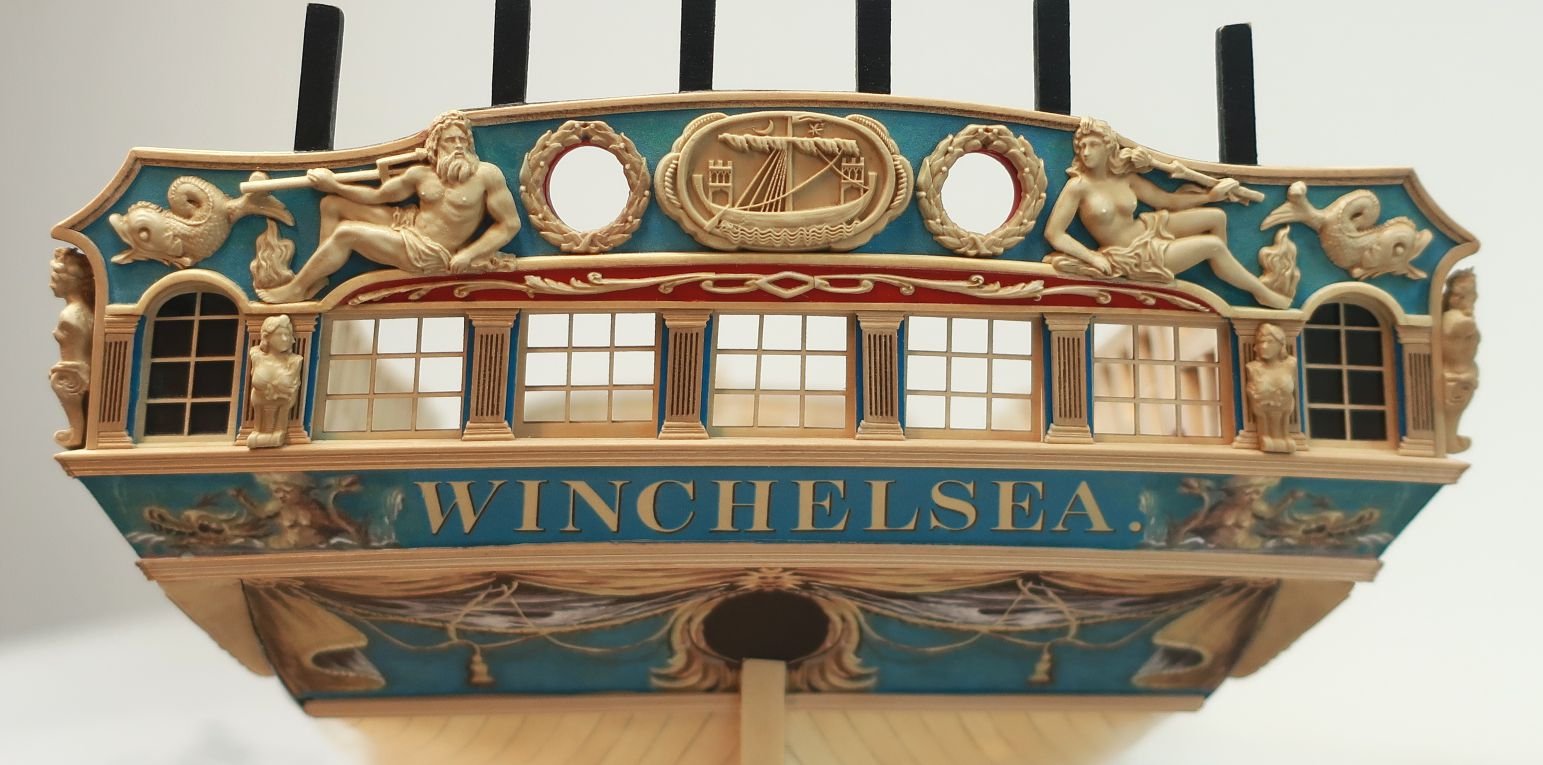
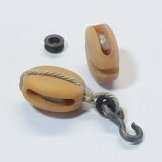
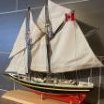

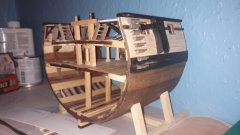
.jpg.d84ec4dad1d7791e855dca06210ab6f3.thumb.jpg.f45209242e851d4409eca1a09293165b.jpg)
